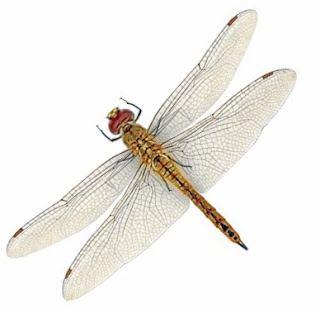 Charles Anderson, a British marine biologist working and living in the Maldives for 26 years, reports on how him noticing the sudden emergence of dragonflies in the Maldives at certain times of the year led him to discover the world's longest migratory journey taken by any insect. It is a truly riveting story of curiosity and scientific discovery.
Charles Anderson, a British marine biologist working and living in the Maldives for 26 years, reports on how him noticing the sudden emergence of dragonflies in the Maldives at certain times of the year led him to discover the world's longest migratory journey taken by any insect. It is a truly riveting story of curiosity and scientific discovery. Each year, millions of dragonflies arrive in the Maldives, an event which is well known to people living there. But no one knew where they came from. Their appearance is especially peculiar because the 1200 islands that make up the Maldives lie 500 to 1000km from the mainland of southern India, and all are coral cays with almost no surface freshwater, which dragonflies need to complete their lifecycle. Anderson noticed the dragonflies after he first arrived in the Maldives in 1983. He started keeping detailed records each year from 1996 and now collates data collected by local observers at other localities in the Maldives, in India and on vessels at sea.
When Anderson compared these observations with those in southern India, he found a clear progression of arrival dates from north to south, with dragonflies arriving first in southern India, then in the Republic of Maldives' capital Male, and then on more southern atolls. Each year, dragonflies first appear in Male between 4 and 23 October, with numbers peaking in November and December, before the insects then disappear once more. The insects arrive in waves, with each staying for no more than a few days.
Over 98% of the dragonflies recorded on the islands are Globe skimmers (Pantala flavescens), but Pale-spotted emperors (Anax guttatus), Vagrant emperors (A. ephippiger), Twisters (Tholymis tillarga) and Blue perchers (Diplacodes trivialis) also appear in some numbers. The dragonflies then reappear between April and June.
Longest journey
The dragonflies are clearly migrating from India across the open sea to the Maldives, says Anderson. "That by itself is fairly amazing, as it involves a journey of 600 to 800km across the ocean," he says. Quite how they do it was a bit of a mystery, as in October they appear to be flying against the prevailing winds. However, in October, and continuing into November and December, a weather system called the Inter-tropical Convergence Zone moves southwards over the Maldives. Ahead of the ITCZ the wind blows towards India, but above and behind it the winds blow from India. So it seems that the dragonflies are able to reach Maldives by flying on these winds at altitude above 1000m.
Record breakers
The species involved breeds in temporary rainwater pools. So it is following the rains, taking sequential advantage of the monsoon rains of India, the short rains of East Africa, the summer rains of southern Africa, the long rains of East Africa, and then back to India for the next monsoon – an epic migration of 14,000 to 18,000km.
It may seem remarkable that such a massive migration has gone unnoticed until now. But this just illustrates how little we still know about the natural world. The monarch butterfly is often cited as having the longest migration of any insect, covering around 7000km in an annual round trip from Mexico to southern Canada. On average, it takes four generations of butterflies to complete the journey. Anderson believes that the dragonflies survive the ocean flights by gliding on the winds, feeding on other small insects. They too, take four generations to make the full round trip each year.
Anderson has noted the migratory paths of a number of insect-eating bird species, including cuckoos, nightjars, falcons and bee-eaters, follow that of the dragonfly migration, from southern India to their wintering grounds in Africa. That suggests the birds feed on the dragonflies as they travel.
No comments:
Post a Comment